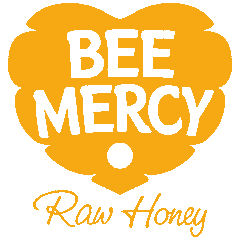The wonderful variance of Raw Honey
Aug 14, 2017
Raw Honey is such a wonderful food. It tastes amazing, good for you and it's natural. The wonder of such a remarkable liquid is that through getting to know about Raw Honey and its characteristics we come to understand the wider environment. Education on the difference from season to season and the slight variances in taste and colour brings a sense of connection and the understanding that this simple jar of honey is a sign post pointing to the wider world. One of these is the knowledge of how our raw honey is labelled.
We simply can't just label our honey based on taste buds, visuals and experienced guess work. We have to be more scientific. Legislation dictates this to us but it also makes absolute sense.
Let's use the example of Forest Honey. One of our favourites. It's a dark, robust beautiful natural honey that is produced by the bees feeding within and around the natural forest area. It will contain florals from chestnut trees, heather, honey dew from the oak tree and other wild forest flowers. However, each season it will have a slightly different taste or texture. This is because we don't force nature, we observe and adjust accordingly. The balance between each of the sources can vary. For example, one season we might have more Heather and the honey will have that heathery kick. But it is not enough Heather pollen to reach the legislated percentage to label it actually as Heather. But it will have the other constituents that mean it can be labelled as a landscape honey. This can be the same with any other sources in the Forest honey.
There is also the quality of the foliage to take into account. Some seasons it could be very healthy, and another not so much. This can also have an effect. So it is easy and clear to see that all these organic environmental factors are what brings these changes, but are also are signs of purity.
All our honey batches are laboratory tested. We check for many things along with Enzyme activity and pollen count. This is not just done once, it's done with every batch that is harvested, it has to be otherwise we would not be able to label it as such. So even the bee mercy label can be seen as signpost pointed to the wider environment.
Unfortunately, this connection to these natural variances within our food and even the seasons has been eroded. One old man once said to me "I wouldn't eat an apple unless there was a maggot in it. But now, we have waxy shiny fruit all year round and even the maggots don't eat it"
This variance in raw honey is such a beautiful part of what it is. It makes it a joy, not just for the taste buds, body and mind, but also for the understanding and connection it points too.


